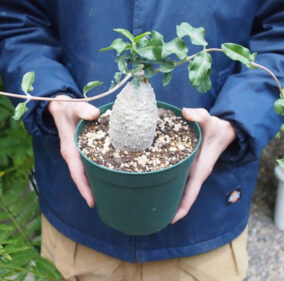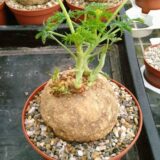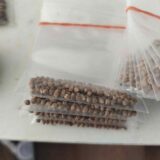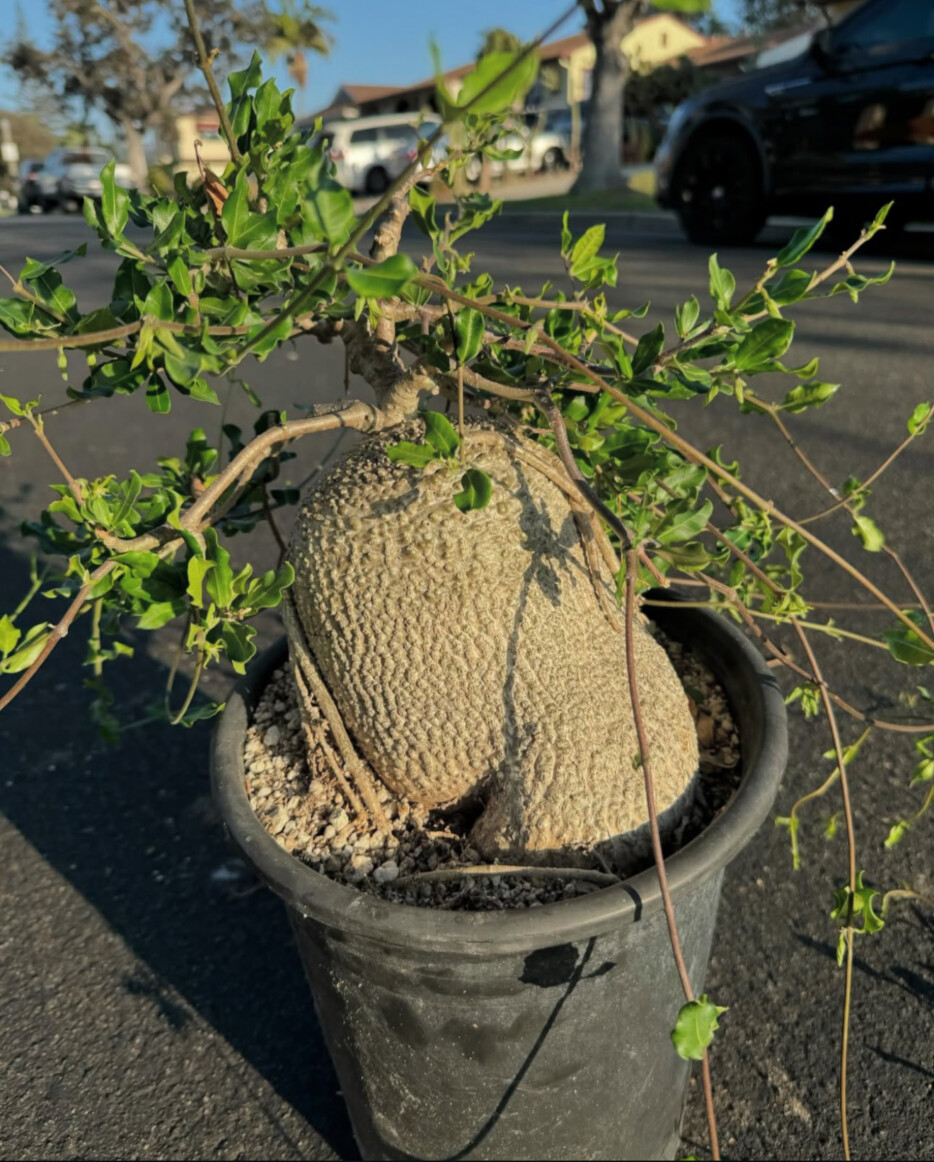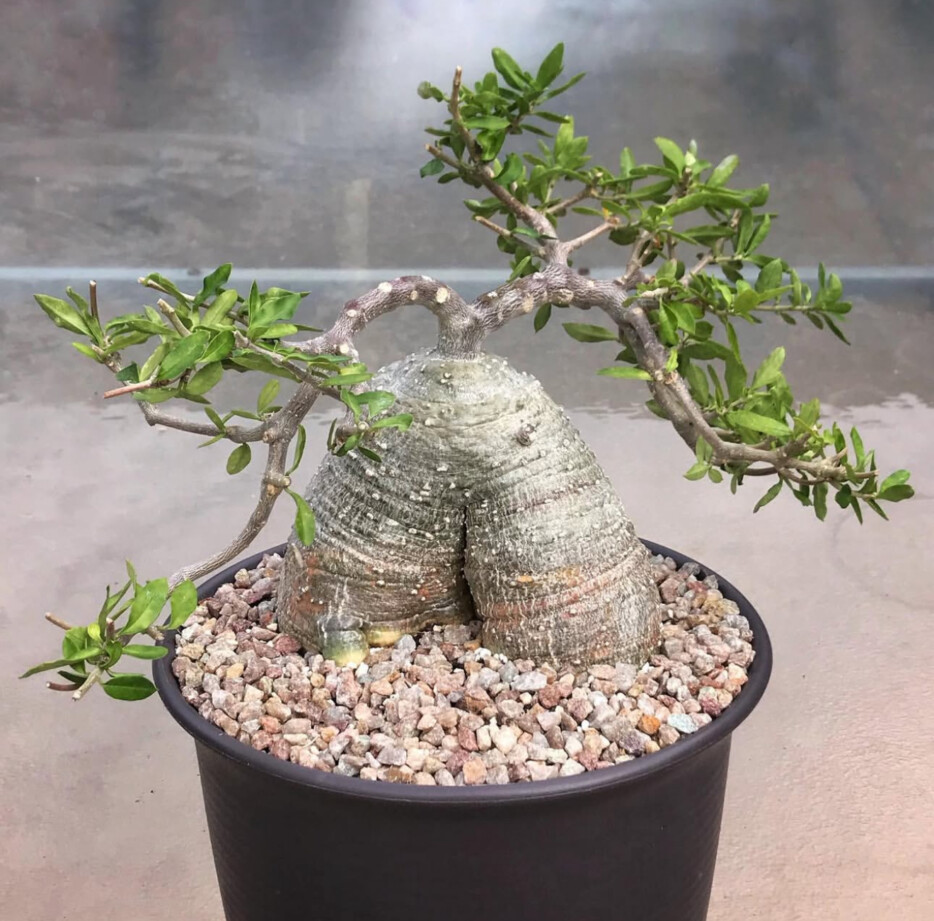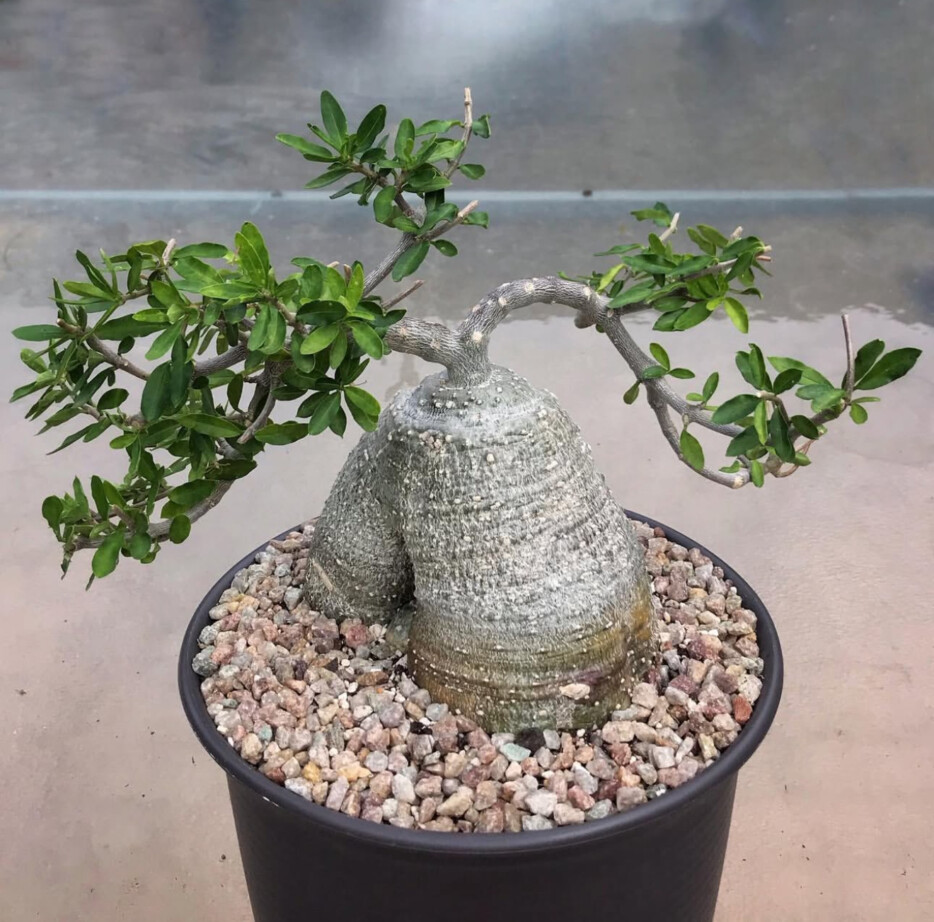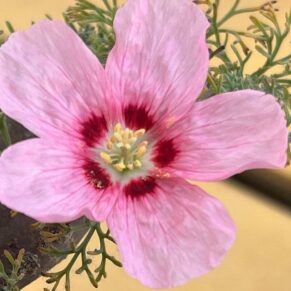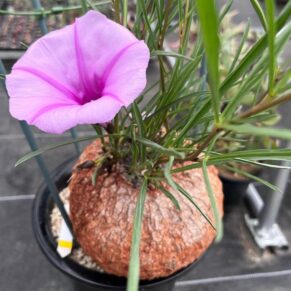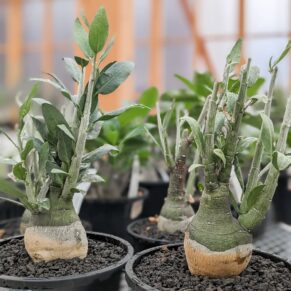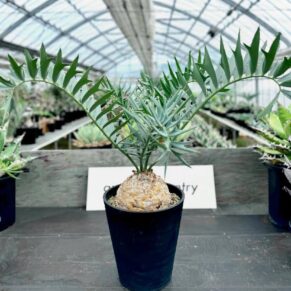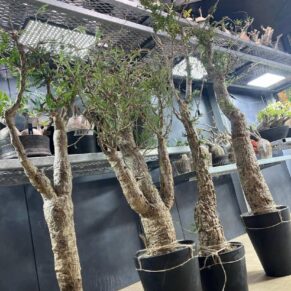- Your cart is empty
- Continue shopping
Welcome to Caudexplants.com – Home of the Remarkable Fockea edulis
Discover a botanical world where beauty, resilience, and intrigue converge. At Caudexplants.com, our passion blossoms through one extraordinary species: Fockea edulis. This captivating caudiciform succulent—endemic to southern Africa—holds a unique allure, blending sculptural elegance with desert-hardened survival. facebook group Here, you’ll immerse yourself in an exploration of its botanical features, habitat, cultivation, and aesthetic appeal—crafted with care to enlighten and inspire.Shop fockea edulis here caudexplants.com
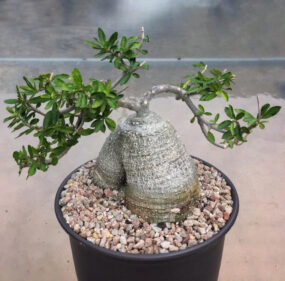
1. A Botanical Gem: Understanding Fockea edulis
Fockea edulis stands among succulents a little less familiar, yet profoundly compelling. Its identity crystallizes in its most iconic feature—a swollen, bulbous caudex. This subterranean or near-surface caudex grows into a stout, rounded form, sometimes reaching the size of a small football or even a large watermelon in mature specimens.Shop fockea edulis here caudexplants.com
Description of Form and Structure
From this caudex springs slender vines, draping gracefully. These vines bear web-like leaves, delicately heart-shaped, and occasionally studded with tendrils. Come flowering time, these vines may present clusters of small, inconspicuous blooms—often pale green to white—unfolding more for survival than spectacle.
The caudex’s surface can vary—from smooth and pale ivory to rougher textures marked with longitudinal fissures or growth rings. Over the years, these crevices deepen, giving the caudex character, like the rings of an aged tree.
Origins and Natural Habitat
Indigenous to the arid to semi-arid savannas of South Africa, Namibia, Botswana, and southern Zimbabwe, this species thrives where water is scarce and temperatures veer toward extremes. It endures blazing sun, stony soils, and seasonal droughts. The caudex stores precious moisture, enabling survival through parched spells. Meanwhile, slender vines emerge in the rainy season, take advantage of fleeting rainfall, photosynthesizing vigorously—and then retreat back to dormancy when resources dry up.
This life rhythm has shaped the plant’s resilience and aesthetic—in its caudex, the sculptural heart; in its vines, the ephemeral grace.
2. Why Fockea edulis Deserves Its Own Spotlight
Sculptural Form Meets Botanical Savvy
At no other species will you find such a striking intertwining of botanical adaptation and sculptural appeal. The caudex is not simply a survival adaptation—it’s an artistic statement. Over years of careful growth, it becomes more than a plant; it’s a living work of natural design.
A Study in Seasonality
Unlike tropical evergreen succulents, Fockea edulis is deciduous. In dry cycles, vines shrink back, sometimes disappearing entirely, leaving the caudex either exposed or just barely clothed. This cyclical bareness-and-renewal cadence fascinates growers and observers alike. It becomes a living chronicle of pause, growth, and rebirth.
Merit for the Ridiculously Patient and Curious Cultivator
Those who nurture Fockea edulis are rewarded with long-term companionship. Patience is key—some caudices take years to show dramatic girth. But when they do, they’re dramatic—the result of steady, thoughtful care. For collectors of slow-growing beauties, this species stands as a grail.
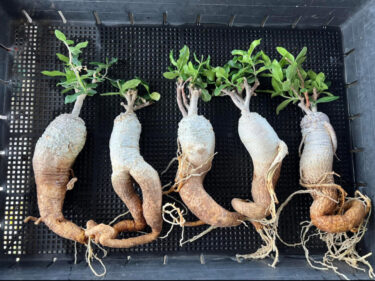
3. Cultivation – Nurturing Fockea edulis with Care and Expertise
Let’s wander into the greenhouse—or your sunniest windowsill—and talk cultivation, step by thoughtful step. Though resilient, Fockea edulis responds with grace when given conditions that echo its home.
Light: Illuminate the Beauty
A handful of gentle rules: bright light is paramount. Direct morning or late afternoon sun encourages robust caudex development. In the most intense midday sun—especially in hot climates—a bit of protection can prevent sunburn on the exposed caudex. Indoors, a south- or west-facing window works well; alternatively, bright filtered light under grow lights serves too.
Soil: Fast-Draining Foundation
Substance matters—choose potting mixes that drain rapidly. A blend might include a mineral-rich cactus or succulent mix combined with coarse sand or pumice, even crushed gravel. The goal: water should pass quickly, leaving the caudex moist but never sodden. A layer of fine gravel atop the soil can offer added moisture control and aesthetic resonance with its natural rocky habitat.Shop fockea edulis here caudexplants.com
Watering: Dance with Season
Watering is a rhythmic dance—heavy in growth, light in rest.
-
Active growth (spring–early autumn): Water deeply, allowing the soil to dry between waterings. Let the caudex soak up moisture—but let it breathe, too.
-
Dormancy (late autumn–winter): Drastically reduce water. Vines may drop. The plant survives on stored reserves. Let the soil dry almost completely—just tease a bit of moisture now and then if the caudex wrinkles.
Temperature & Climate: Warmth with Tolerance
This plant tolerates warm days and cooler nights—think 25–35 °C daytime, 10–20 °C nighttime. It’s frost-sensitive; temperatures dipping below about 5–7 °C for extended periods risk damage. Indoors, use the warmth and stay above the pinch point.
Fertilizer: Not a Hunger Monster
This isn’t a heavy feeder. A gentle feeding—quarter-strength balanced or low-nitrogen fertilizer during the growth phase, once a month—supports steady, controlled development. Overfeeding will spur leggy vines rather than a stout caudex.Shop fockea edulis here caudexplants.com
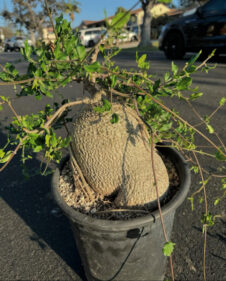
Potting & Repotting: Room to Grow
Re-pot infrequently—only when the caudex outgrows its container. The aim is slow expansion. Gentle loosening of roots, fresh mineral soil, and a slightly larger pot every 2–3 years is ideal. Always allow the plant to settle for a week before resuming watering.
4. Visual Appeal and Display Ideas
Living Sculptures for Interior Design
With its dramatic presence, an exposed Fockea edulis caudex is a statement centerpiece. Imagine it in a minimalist pot, perched on a low pedestal or modern shelf. Seat it where light grazes from one side, casting soft shadows that highlight the curves and textures.
It thrives alone, untouched by competing greenery. But in groupings, pair it with architectural succulents—think haworthias, lithops, or spent clumps of echeveria—to echo textural contrast while respecting its unique structure.
Seasonal Transformation as Narrative
Host a small “living gallery” to highlight its seasonal cycle. When vines are lush, feature it on a windowsill with complementary soft-green tones. As the plant goes dormant, shift it to a darker shelf with spotlighting, turning its bare caudex into a sculptural highlight surrounded by minimalist decor—which celebrates the ebb as much as the flow.Shop fockea edulis here caudexplants.com
5. Propagation and Growth Rhythm
Although Fockea edulis can be slow-growing, propagation offers the patient gardener a path forward.
Curating Seeds or Cuttings
-
Seeds: Obtaining seeds (ideally fresh) enables propagation from the start—embed them shallowly in a damp, warm mix and mist lightly. Germination may take several weeks. As seedlings develop their own tiny caudices, they gain their sculptural identity.
-
Cuttings: Rarely performed, but in dry seasons, a vine-cutting can be rooted—provided it’s treated with rooting hormone and placed in a warm, lightly moist substrate. Success varies, and the process demands delicate attention.Shop fockea edulis here caudexplants.com
Patience as Virtue
Expect slow progress—growth measured in fractions of inches per season. Yet, this pace invites mindfulness, respect for natural rhythms, and deepened connection with the plant. Each year brings incremental thickening—each millimeter of added girth a quietly earned milestone.
6. Longevity and Legacy
In the right hands—careful, consistent, patient hands—a Fockea edulis can live for decades. As its caudex matures, your role shifts from caretaker to custodian, stewarding a living heirloom.
Imagine passing this living sculptural wonder—replete with decades of growth and memories—to the next generation of cultivate, each ring in its texture a chapter of care. In private collections, botanical gardens, or future displays, it becomes more than a plant—it becomes legacy.
7. Community and Shared Passion
Owning, growing, and celebrating this plant opens the door to a nurturing community—other enthusiasts, growers, artists, and storytellers. Share photos of caudex milestones; swap tales of dry seasons or watering missteps that taught harder lessons. Compare soil mixes; compare dramatic caudex shapes. Such conversation enriches the experience—turning a solitary journey into shared wonder.
8. Ethical Sourcing & Conservation Mindset
As collectors, we bear responsibility toward conservation. This species, while not critically endangered, may be subject to over-collection in parts of its range. Seek ethically sourced specimens—from reputable nurseries or growers who propagate responsibly. If you purchase seeds or plants, ask about their origins.
Beyond sourcing, your cultivation becomes part of a conservation effort—a living ambassador. A healthy, well-cared-for specimen maintains genetic lines outside of its native habitat—and raises awareness through beauty and stories.Shop fockea edulis here caudexplants.com
9. Embracing Fockea edulis as More than a Plant
Here lies the core of why Fockea edulis commands such devotion:
-
It’s art and science in one. Sculptural beauty infused with botanical ingenuity.
-
It’s rhythm. Dormancy and growth alternate—a living testament to seasonal patience.
-
It’s presence. Whether clad in vines or standing in quiet exposure, it draws the eye, evokes emotion.
-
It’s collaboration. Between plant and cultivator, time and respect, visitor and heirloom.Shop fockea edulis here caudexplants.com
Final Words – A Living Paean to Fockea edulis
At Caudexplants.com, our mission is deeper than display—it’s devotion. Through nuanced care instructions, evocative storytelling, and shared fascination, we illuminate the life story of Fockea edulis—plant, sculptural icon, companion.Shop fockea edulis here caudexplants.com
